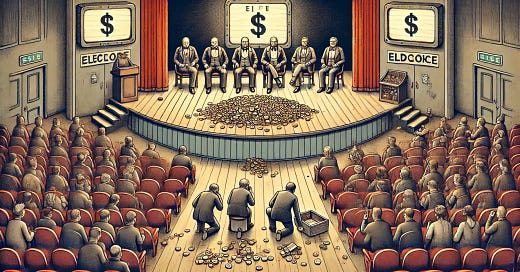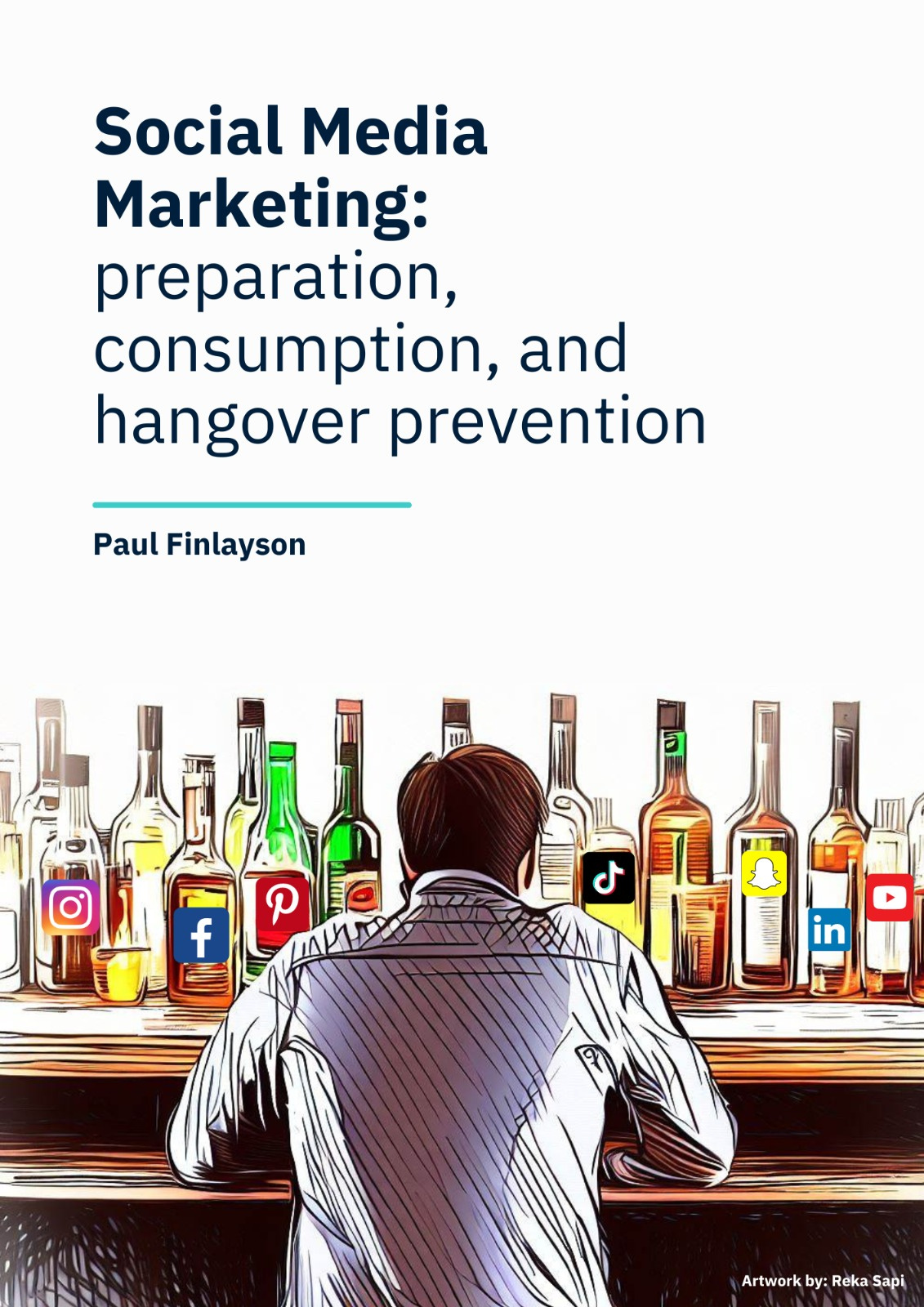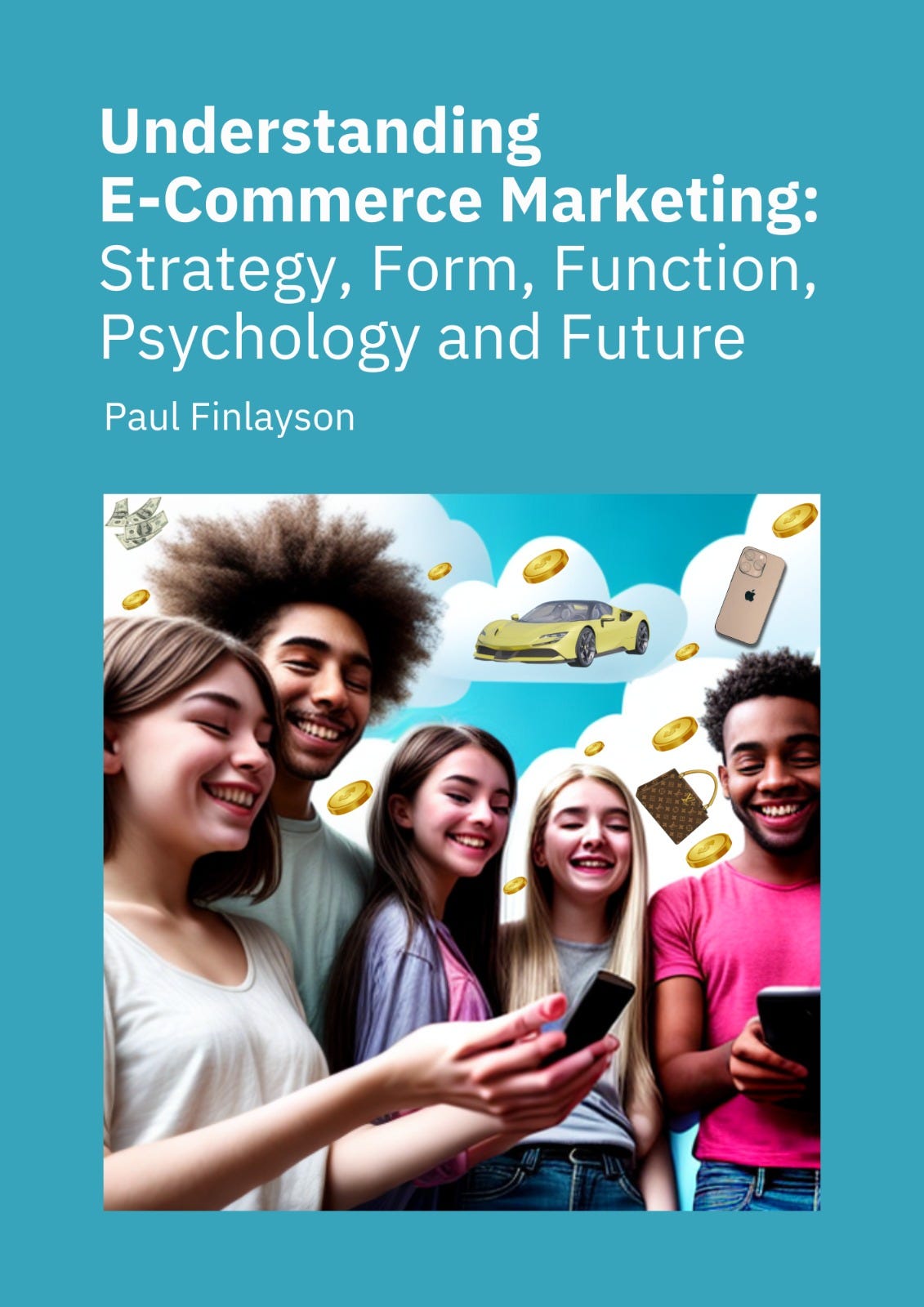A MODEST PROPOSAL TO IMPROVE SUBSTACK BOTH FOR WRITERS AND READERS
Just because it's called a modest proposal please be assured that it doesn't involve any calls to start eating Irish babies.
A set of proposals to improve Substack. I think I don’t have a lot of pull on my own, so please send this to anyone well-connected at Substack (unless you think it’s rubbish, and then you can just tell your Substack executive friend over beers how you read an article by some moron about suggested changes for Substack.)
If anyone wants to cross-promote this piece, please do so; I’m not exactly sure how to do it, which speaks to my intelligence, Substacks’ lack of intuitiveness or perhaps both.
Either is fine.
JULY 28, 2024
____________________________________________________________________
While Substack is a wonderful publishing platform, it could be much more. Here are some suggestions. I realize that I am a nobody, and if people believe the points below and don't re-stack the posts - even if they agree - there is no chance the marketing department at Substack will listen to someone like me. Change will only happen if a large number of people agree.
I started www.freedomtoffend.com about nine months ago and have grown to 900 subscribers with 25% paid. But it is still quite small, so I have no power alone. That is why I hope for other’s support and some viral effect.
I teach e-commerce, social media marketing, relationship marketing, and consumer behaviour at university. I’m no academic rock star, but I have written texts and researched all these areas, and I think I have some constructive suggestions for the Substack marketing team.
I hope others read this and, if they agree, restack it (or restack portions they agree with and add anything). However, Substack authors are in the best position to make suggestions for improving the brand. I hope that a groundswell of us common Substack folk can make a change. I do not rely on SS to pay the bills but have hope it can grow bigger; my feelings are not likely uncommon. Here are my ideas and analysis to help Substack grow without becoming like other social media.
Global Brand Recognition
The brand is not well-marketed; many have not heard of it. Substack should have numbers on this, but I have met many educated people who have never heard of it. When a brand is not well known, and people are told to sign up through email, they suspect phishing. I have had many people struggle with the signup method; the person who wants to read one piece should be able to do so with little harassment and irritation about signing up for an account.
Sign-up and Technical Issues
Subscription is a level of commitment that is too much for many. That is the problem.
The sign-up method (just to read an essay) should be like those financial companies that text you a code after you give them your phone number and make you enter it on your phone. Or work through fingerprint / facial recognition. It needs to be insanely easy and quick. There is a reason that one-click on Amazon is popular.
People could get three free reads per month and, after that, have to buy.
The sign-up method could be better. People are very suspicious of phishing driven through hotlinks. The combination of a largely unknown brand and email link invitations is suspicious and poorly thought through. This sign-up method needs to be updated.
Categorization: We consider the customer a potential subscriber and a potential purchaser of the right to read a single essay.
People want to consume content, single essays, and only sometimes subscribe to one author. They also should be able to read random essays selectively. Those can be paywall protected with perhaps ⅓ of the content offered up, and the rest below the line needed a paid reading purchase or overall subscription.
Categorization in Substack needs to be done better, and search engines could be improved. If the model allows for subscriptions and micropayments that allow people to read single essays, there must be much better categorization. Only some people want to subscribe, and we do not value what we are given for free. Some might say this is a freemium model, but how much additional value can you drive beyond the main post? Access to chats? Early release? That’s not enough, and the difference between the paid and typical free subscription is much narrower than other apps (like some dating apps that use a freemium model).
Furthermore, if Substack wants to go all in, it should give anyone three free essay reads per month. After that, they have to pay to read individual essays and/or subscribe to a single content provider.
Methods - Consumption of Content
People read Substacks on their phones, not laptops. This data is widely available, and all content should be presented in a format best configured to this reality.
Make co-authorship and cross-posting more intuitive and easy to use.
Connections, Search, Categorization
Substack needs to affiliate itself with the education system, especially post-secondary. As they and most of us know, print media and newspapers are dying. We live in a wild scrub jungle of information, mainly weeds, and finding nutritious plants is hard. Substack has to put some serious effort into its search algorithm. Their AI responds well, but Substack's categorization isn’t very effective. Right now, it isn’t much use.
Random
Substack should work with a domain provider to help writers get their domains; they help readers connect to Substacks.
Substack should declare unoccupied Substacks where someone doesn’t write (unless they have formally suspended them) for X amount of time and delete them. Clutter and empty SSs don’t help the brand when people search. They will create bad data.
It should be easy to share essays/newsletters you like with people, just like on other social media. It shouldn’t force people to sign up to read single papers.
I use Dall-E for AI in pictures. Readers tell me the pictures make a huge difference, but the AI built into Substack could be better.
Profit Models and Profitability
The key is price sensitivity. Substack has a mix of very popular niche writers, writers who worked in legacy media and entered the Substack market with a huge brand presence, very good writers who are growing, writers who really don’t care and will always have a handful of subscribers, and those who rarely post.
Substack needs to consider putting ads at the bottom. We don’t want to become just a social media vehicle for writers, but some subtle advertising should be considered. It doesn’t have to be as bad as the major social media platforms.
Most importantly, it’s great that Substack allows free options and automatic discounting. I have discounted mine to $2.50 and grown to $600 monthly, with 900 subscribers and over 200 paying—all in less than nine months. I need to find that student who publically laughed about my 14 subscribers last October. :)
But I see some pretty poor substacks asking USD 11 or $14, and it’s just not realistic. Another thing you have not considered is that everything is 30% more expensive for Canadians. Plus, we have crappy winters.
You needed to sell Stackers (sorry, I couldn’t come up with a better name), which would serve as an internal currency that could be purchased easily on the phone/site with just a few clicks. This would allow people to pay for access to a single article they like or allow them to subscribe to someone they like, and most importantly, if the Stackers were sold, for example, for $20 for 100, it would allow writers to price both single essays and subscriptions at lower rates without using discounting features. It’s better to make $20/week on individual essay sales than zero on mandatory expensive subscriptions. This is crucial, as I do not understand the basic subscription being CAD 7; that’s just too much.
If the point of Substack is to give established mainstream media writers a new source of income, it’s fine, but it is a move that works against the new writer.
But back to the pricing, people do not value what they don’t pay for, even if they only pay $1. Free subscribers that don’t engage, don’t read, and don’t share are useless. This “Stackers’ method would allow (depending on the numbers) sub-subscribers to read their essays for - for example - $.20 (one stacker) or subscribe for $1.50 per month. I realize small amounts might raise Substack’s percentage expectations as processing small transactions might be a pain, but someone should get $150 monthly from 100 subscribers rather than have 200 subscribers and make $10 because they only got their grandma and mother to sign up. You have to allow a proper market mechanism.
As writers, we need far better engagement numbers, heat maps, read times, and finish rates, not just open rates. There isn’t proper data; the technology is about 2000.
Partnership Opportunities and Metrics
Substack should team up with Etsy and others to offer advertising (the writer must get a good chunk of it; some say that you should wait until you get to 2000 subscribers and then try to get one sponsor, but if those are non-readers the subscriber number is useless). Granted, in niche markets, some have likely been successful. But many Substacks, like mine, could be more focused and more geographically focused. But they aren’t. Substack would have to match with e-commerce vendors that ship to the UK, Canada, and the US.
Again, I don’t have your stats, but you need to determine if non-paying subscribers are engaging. Are those just vanity stats? If so, what use are they?
Substack should use some form of gamification that rates writers on their growth in both readership and subscriptions. It would allow stats if people pay small amounts through credits to read single essays. Gamification, knowledge, and the ability to compare prevent writers from getting discouraged; I have 900 subscribers and 203 paid in 9 months. Is this good or bad? Is that 60 percentile worse or better? How am I doing? People get discouraged if they don’t know where they stand. And if you gave out little awards, contests, etc or allowed readers to vote on the best essay, using a decent starred rating system or something else, you would give better incentives for readers to write. You need to raise engagement; right now, it’s too basic.
You won’t have a problem getting well-financed companies or big brand names to set up Substacks and help to become successful. Kim K could come over and write weekly about how dry her heels were and her toenail fungus issues, and she would get 50000 subscribers in an hour.
However, Substack should focus on the small, unknown up-and-comers and not just rely on the big names.
Conclusion:
Substack is a wonderful product, not only as a market item but also as a force that encourages amateur writers to develop and create meaningful content for readers. Long-form reading is trending down, and there must be better ways to encourage readers. However, the focus needs to be modern; it should not exclusively focus on subscriptions; it must allow micro-purchases for those who want to read a single essay.
Sign-up for subscriptions or micro-purchases for single papers must be simple and quick. People should never be taken off-site to check their email. In modern e-commerce, that is never done, and many people likely never return.
Paul Finlayson, www.freedomtoffend.com








Hello!
In the process of reviewing my own subscriber base I noticed that you subscribed to my channel. Congratulations, you recently made the cut as far as active subscribers are concerned! What that means is that I ditched everyone who subscribed prior to Jan. 2024 that show no activity, which effectively cut my list in half. Those are what I call "impulse subscribers" - people who subscribe based on a comment I made on some other channel, but who never really looked to see what my channel is about. I'm fairly confident about that definition because I don't advertise anywhere, and the people who I dropped almost all have a characteristic signature, which is they're subscribed to far more channels than anyone could possibly read - in the hundreds for some of them.
I don't count that as a loss since they weren't paying attention anyway, and I'm not really interested in building my numbers. I regard obscurity as an advantage actually, in the sense that only the truly interested will seek me out and stick around. This relates to my own belief that 'change occurs at the margin.' I don't have to reach a wide audience in order to effect change, only influence a few key people who will themselves influence a few key people, and so on. A network effect, as opposed to a mass media approach. This is the 'hidden ground' of social media as McLuhan might call it. The linking up of individuals with similar goals and outlooks, some of whom may be in a position to effect positive change, as opposed to creating a fan club which people join simply for a sense of belonging to something bigger than themselves, but not actually taking it any further than that.
There's a lot of historic precedence for the notion that 'change occurs at the margin.' The light bulb, for example, was not created by a committee looking for ways to get people to read more books. One person invented it, a few more saw the potential and put their money on the table, after which it took off like wildfire and literally changed the social dynamic in too many ways to list. The same rubric can be applied to historic developments such as fire, the wheel, stirrups, the crossbow, the compass, gunpowder... you get the idea.
Substack fits that definition as it was the brainchild of a couple of people, not something that came out of the design dept. of Microsoft or Apple. Does it have enough traction to achieve the kind of results you're hoping for? Well, maybe. Not every new idea is widely accepted at first. Often it hangs around for years before its applications and implications are fully understood. A good example is gunpowder which the Chinese invented, but never considered its application to artillery, other than small rockets designed to frighten horses. The stirrup of course was widely adopted as it was simple to implement and gave an obvious huge advantage in horse mounted combat.
The thing to realize about Substack is that it's small - less than 100 employees - and at present unprofitable, although being privately held the numbers are a bit hard to pin down. Do a Duck search on <substack financial position> for more insight.
My own channel is an example of what they're up against. I'm what you'd call a loss-leader. I'll never make any money for them because I don't charge anything. In addition, I take up a lot of their storage compared to people who only write, as my channel is audio and visual intensive. That said, they need us just to puff up their numbers in the same way my own subscription base was puffed up by compulsive subscribers. It's a bit of a shell game, which being in marketing I'm sure you understand.
Much like you, I'm studying the phenomenon as I believe Substack does have the potential to be a game changer, which is why they've already drawn negative attention from their rivals, the latest example being the hosting Nazis thing, which is absurd on its face. When you have to play the Nazi card you're reaching rock bottom and would probably be better off looking for Nazis in the Canadian parliament where they apparently have a lot of fans.
One suggestion I made to Substack mgmt. was to abandon their aversion to advertising and adopt a more intelligent approach. In short, allow authors to present advertising of their own choice, such as a travel themed channel carrying ads for cheap air tickets, but at the same time allow subscribers to opt out of receiving ads with no penalty. Many would opt out I'm sure, but not all. Personally I would be happy to host ads from music related companies since that's what my channel is about. Subscribers can then decide to opt in or out at any point. As a model railroader, I can assure you I'd opt IN at any channel about trains, and I'm sure the principle applies to almost all hobbies, which is a large part of the substack community. It's not all about politics.
As you'd expect, I've heard nothing from them on the idea, although it did get positive responses in the comments on one of their 'how can we improve the substack experience' posts. Not sure if they're too overworked to respond and are considering it, or are just too hostile to the idea of selective voluntary advertising, which is short-sighted IMO. As it stands, I have my doubts about their survival, given that they're attracting a lot of negative attention from the censors, and certainly must have noticed the recent arrest of the Telegram founder, which would have a chilling effect.
OK, that's enough words for now:) Interested to get your thoughts and perhaps establish a dialogue. Meanwhile I'll read your other posts and see if I can add anything constructive in the comments!